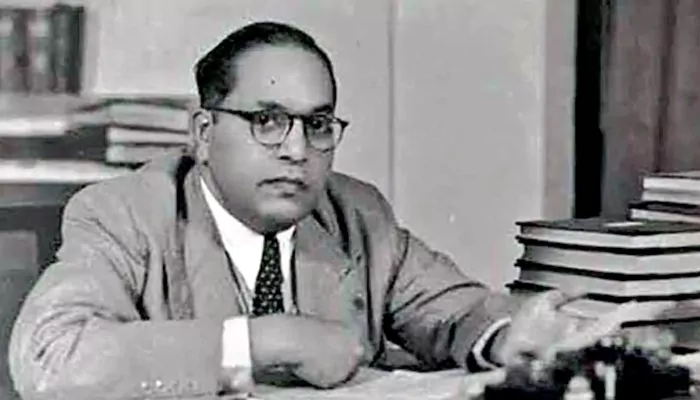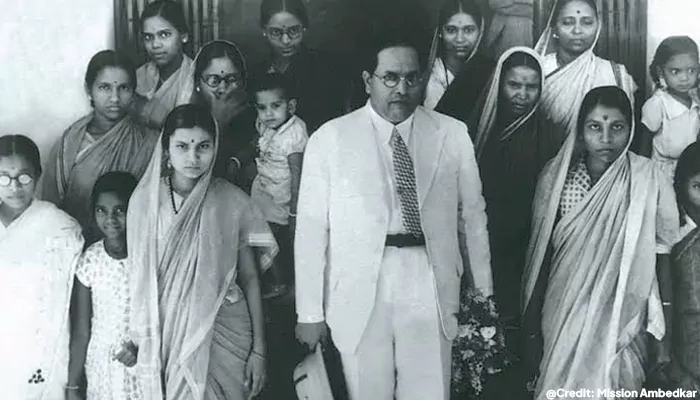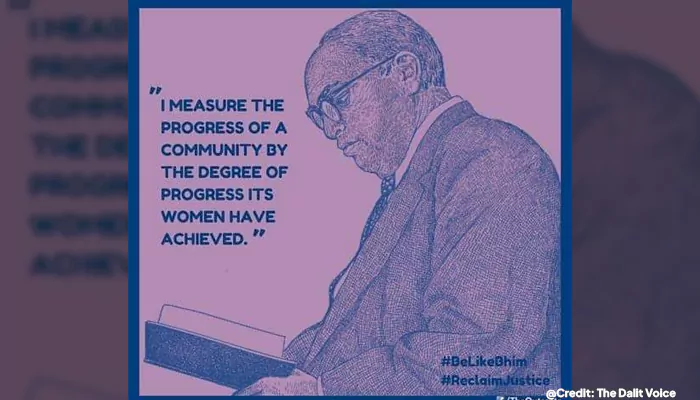Birth Anniversary Special: How B. R. Ambedkar Fought for Women's Rights - The Forgotten Story
- Soham Halder
- 8 months ago
- 5 minutes read

Ambedkar's contribution to women's empowerment is a key chapter in modern Indian history, though not as widely discussed as his role in framing the Constitution or fighting caste discrimination.
"The battle for women's rights has to be fought by women and men together." - B. R. Ambedkar.
When we think of Dr. B.R. Ambedkar, we mostly remember him as the man behind the Constitution of India or as the voice of the oppressed castes who had suffered injustice for generations. But Ambedkar’s idea of justice wasn’t limited to caste alone. For him, it was about standing up for anyone who had been pushed to the margins—and that included women too. In a country where patriarchy had long silenced women, Ambedkar spoke up for their rights, their dignity, and their place in society. He once said, “I measure the progress of a community by the degree of progress which women have achieved.” His fight for women’s education, equal rights, and legal protection was way ahead of its time. So today, on his birth anniversary, let’s take a moment to talk about this often-overlooked part of his legacy—his powerful and progressive stand for women’s empowerment.

First Step to Freedom: Education
Ambedkar knew one thing for sure—if you want to change someone’s life, give them education. For women, this was the missing link to freedom. At a time when educating girls was frowned upon, Ambedkar pushed back hard. He set up hostels for girls, encouraged families to educate their daughters, and emphasized co-education.
Credit: thegirlfoundation
He believed that educating women wasn’t just about literacy—it was about lighting a fire of confidence, awareness, and self-worth. His famous slogan, “Educate, agitate, organize,” wasn’t meant for men alone. It was a rallying cry for women, too.
The Hindu Code Bill: A Revolution in Ink
In the 1950s, as India’s first Law Minister, Ambedkar drafted what was then a shockingly progressive document: the Hindu Code Bill. It aimed to give Hindu women legal rights in marriage, divorce, inheritance, and adoption—things unthinkable at the time.

The bill faced massive opposition from conservative corners, and a diluted version was passed only after his resignation. But it sparked a change. Thanks to Ambedkar’s groundwork, several landmark laws followed:
Hindu Marriage Act (1955): Gave women the right to divorce and seek maintenance.
Hindu Succession Act (1956): Allowed daughters equal rights to family property.
Hindu Adoption and Maintenance Act (1956): Recognized women’s right to adopt and claim maintenance.
Hindu Minority and Guardianship Act (1956): Gave mothers a legal role as guardians of their children.
(Credit: womensvoice.india
And thus, Ambedkar rewrote the rules of a society built to keep women down.
Rights at the Workplace: Maternity and More
Ambedkar’s vision for women extended into the workplace, too. As a member of the Viceroy’s Executive Council (Labour Member) in British India, he pushed for the Mines Maternity Benefit Act, which made it mandatory for employers to provide paid maternity leave to women miners.

It was one of the first steps toward recognizing that women weren’t just homemakers—they were workers, contributors, and economic forces who deserved dignity and support.
Power in Paper: Constitutional Guarantees
As chairperson of the Constitution’s drafting committee, Ambedkar made sure India’s foundational document wasn’t blind to gender. Under his leadership, the Constitution laid down:
Article 14: Equal protection under the law.
Article 15: No discrimination on grounds of religion, race, caste, gender, or place of birth.
Article 16: Equal opportunity in public employment.
Directive Principles (Article 39): Equal right to livelihood and equal pay for equal work.
Did You Know? Dr. B.R. Ambedkar, a true champion of women's rights, played a pivotal role in ensuring greater participation of women in all spheres of life. Through his Marathi fortnightly newspapers, 'Mook Nayak' and 'Bahishkrit Bharat', he highlighted the significance of women… pic.twitter.com/iH7qxJETF2
— Amrit Mahotsav (@AmritMahotsav) April 4, 2025
(Credit: ieentertainment)
Credit: Amrit Mahotsav
These weren’t just lines in a book—they became the base on which India’s women’s rights movements would grow.
Groundwork and Grassroots: Women as Change-Makers
Ambedkar didn’t just work in courts and councils. He took the fight to the ground. He organized meetings with Dalit women, encouraged them to speak out, and created platforms where they could be heard. In conferences and social reform movements, he urged women to come forward—not just as supporters but as leaders.
Credit: womenssocialcorner
He believed that real progress required women to be seen not just as beneficiaries but as agents of change.
Ambedkar’s fight for women’s rights didn’t end with laws or speeches. It was a lifelong commitment to building a more equal society. He saw clearly what many still miss today—that caste and gender oppression often walk hand in hand, and real freedom means breaking both. So while we remember him for giving us the Constitution, let’s also remember the fire he lit for millions of Indian women—the fire to rise, speak, fight, and lead.
References:
Shankar IAS Parliament: Ambedkar & Women's Rights
CivilsDaily: Babasaheb Ambedkar’s Contribution Towards Women's Rights
The Sunday Guardian: Women Empowerment – The Less Remembered Legacy of Dr Ambedkar
Velivada: Dr. B.R. Ambedkar – The True Feminist of India
IJCRT: Dr. B.R. Ambedkar's Vision for Women Empowerment











